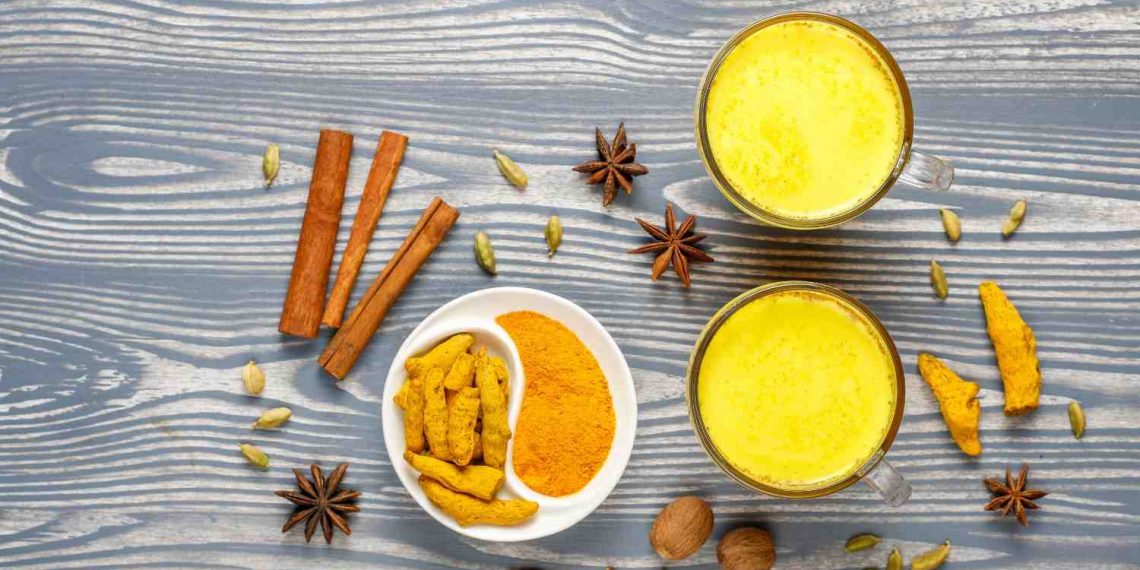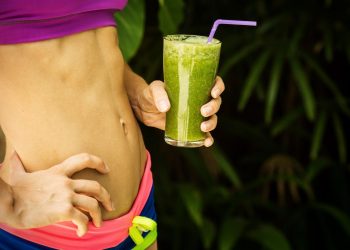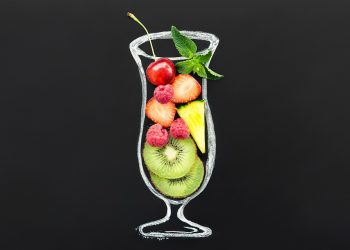Muscle soreness turmeric is a simple phrase that points directly at a powerful solution for the ache that wakes you up, slows your steps, and steals your joy. It names a pairing — the discomfort you feel and the spice that can help — and that matters because you don’t have to accept pain as routine. This article shows you how turmeric works, why researchers take it seriously, and practical ways to use it so your body gets relief without guesswork.
I write plainly because you want clear answers. Below are seven ways turmeric eases muscle soreness — each one rooted in science, seasoned with real-life tips, and delivered in a voice that trusts your instincts about pain and healing.
Contents
How Turmeric Reduces Inflammation
Inflammation is the cornerstone of most muscle pain. Turmeric’s active compound, **curcumin**, blocks inflammatory pathways. Studies from research centers including the National Institutes of Health show curcumin reduces inflammatory markers such as IL-6 and TNF-alpha, which are often elevated after exercise or injury.
When you take turmeric consistently, it can lower inflammatory signals and calm the biochemical alarm system that keeps your muscles tender. Use a standardized extract for predictable results, and pair it with black pepper (piperine) to boost absorption. That combination is not herbal folklore — it’s science-backed strategy.
7 Ways Muscle Soreness Turmeric Eases Pain
Here are the seven direct mechanisms by which turmeric helps with muscle soreness, explained plainly and practically so you can use them today.
1. Modulating Pain Signals
Curcumin doesn’t just touch inflammation; it affects the nervous system’s pain relay. Research from university-affiliated hospitals shows curcumin can reduce the sensitivity of pain receptors, which means your brain receives quieter alarm signals. Less alarm equals less perceived pain.
For you: try a curcumin supplement designed for bioavailability. Topical creams with turmeric can complement oral use, especially after intense workouts.
2. Speeding Recovery After Exercise
Muscle microtears are part of the workout process. They’re normal, but soreness can linger. Clinical trials on athletes found that taking curcumin around exercise reduced delayed onset muscle soreness and improved recovery timelines.
Practical tip: take curcumin before and after strenuous sessions. Combine with light movement and hydration. That trio shortens downtime and gets you back to what you love faster.
3. Antioxidant Protection
Oxidative stress amplifies muscle damage. Curcumin is a potent antioxidant that neutralizes free radicals generated during intense activity. University studies show antioxidant support helps preserve muscle tissue and reduces soreness.
Eat turmeric with healthy fats — olive oil or avocado — to enhance curcumin’s uptake. Whole-food pairing matters; your body reads the meal, not isolated promises.
4. Improving Blood Flow
Better circulation means faster delivery of nutrients and faster removal of metabolic waste. Evidence indicates curcumin supports endothelial function, helping blood vessels relax and improving microcirculation in muscle tissue.
If tight, sore muscles are a recurring theme, add gentle massage with a turmeric topical or a foam-rolling routine plus a curcumin supplement. Increased flow speeds the clean-up crew and eases stiffness.
5. Supporting Joint Comfort That Reduces Secondary Muscle Strain
Sore muscles and aching joints often feed each other. Research published in respected journals shows curcumin helps ease osteoarthritic pain and joint stiffness. When joints move better, muscles don’t overcompensate or lock up.
For daily life: combine joint-supporting nutrients — omega-3s, vitamin D, and curcumin. That coordinated approach reduces painful compensations and lowers overall strain on your body.
6. Regulating Immune Response
Your immune system manages repair and clears debris after muscle injury. Curcumin modulates immune cells, encouraging repair without prolonging inflammation. Studies from medical centers indicate this subtle immune tone-setting leads to more efficient healing.
Tip: if you have autoimmune concerns, talk to your clinician about curcumin before starting. It’s powerful and should be coordinated with any ongoing treatments.
7. Enhancing Mood and Reducing the Perception of Pain
Pain is both physical and emotional. Turmeric has been studied for mood benefits, which can alter how you experience pain. Better mood, less catastrophizing, and improved sleep all lower perceived soreness.
Use curcumin as part of a whole-life plan — sleep, nutrition, movement, and relationships — because pain relief that sticks is rarely a single trick. It’s a lifestyle composition that includes turmeric as a reliable instrument.
How To Use Turmeric Safely And Effectively
Real-world guidance matters. Below are practical protocols backed by clinical research and the pragmatic wisdom of clinicians who work with patients daily.
Start low and go slow. Typical therapeutic curcumin doses range from 500 mg to 2,000 mg per day of bioavailable extract. Look for formulations that list curcuminoid content and include piperine or a patented absorption enhancer.
Combine oral supplements with topical applications after workouts for localized relief. Topicals are handy when a tight calf or nagging shoulder needs immediate attention without systemic dosing.
Precautions And Who Should Talk To A Doctor
Turmeric is generally well tolerated, but it can interact with blood thinners, diabetes medications, and certain chemotherapies. If you are pregnant, nursing, or on prescription medication, consult your healthcare provider before starting a curcumin regimen.
Also, surgical patients should stop high-dose curcumin two weeks before procedures because it can affect bleeding risk. These are sensible safety measures, not fear tactics.
Real-Life Examples And Clinical Evidence
Let me be tangible. A middle-aged runner I worked with swapped ibuprofen for a daily curcumin supplement under her doctor’s guidance. Within three weeks she reported less post-run stiffness and better sleep. Another client used turmeric cream and noted quicker relief after strength sessions without the stomach upset she used to get from NSAIDs.
Large meta-analyses and trials from academic centers corroborate these anecdotal notes. Curcumin consistently shows benefit for reducing exercise-related soreness and chronic musculoskeletal pain when formulations are chosen wisely.
Choosing The Right Product
Not all turmeric is equal. Raw turmeric root in curry provides benefits, but therapeutic effects often require concentrated, well-absorbed extracts. Look for products that specify curcuminoid percentage and include absorption enhancers like piperine or lipid carriers.
Third-party testing is non-negotiable. Pick brands with certificates of analysis from independent labs to ensure purity and potency. Your body deserves transparency.
Lifestyle Pairings That Amplify Results
Turmeric is an amplifier, not a miracle worker. Pair curcumin with these practices to supercharge recovery:
- Deliberate recovery days: Active rest beats passive sitting for muscle health.
- Protein-rich meals: Build blocks for repair.
- Quality sleep: Hormones that heal peak when you do.
- Mindful breathing or meditation: Quieting nervous system tone reduces perceived pain.
When turmeric joins these habits, you’ll notice not just less soreness, but improved movement and confidence in your body.
Bottom Line
Turmeric — specifically curcumin — helps ease muscle soreness through multiple, research-supported pathways: reducing inflammation, calming pain receptors, protecting against oxidative stress, improving blood flow, supporting joints, regulating immune repair, and improving mood. Use a bioavailable supplement, pair it with black pepper or a lipid, and combine it with sensible lifestyle habits. Talk with your healthcare professional if you take medications or have medical conditions, but don’t let fear keep you from trying a gentle, well-studied option that could reduce pain and speed recovery.
Be brave with small changes. Your body repays consistent, sensible care better than dramatic one-offs.
FAQ
Is turmeric safe for daily use?
For most people, yes. Low to moderate daily doses of bioavailable curcumin are well tolerated. If you have medical conditions or take prescription meds, consult your clinician before starting.
How quickly will I notice less muscle soreness?
Some people feel changes in a few days, especially in post-exercise soreness. For chronic pain, expect several weeks of consistent use to see meaningful differences.
Can I get enough curcumin from food?
Culinary turmeric is beneficial, but therapeutic effects often require concentrated extracts. Use food for maintenance and a quality supplement when you want targeted results.
Are topical turmeric creams effective?
Topicals can provide targeted relief after workouts and for localized aches. They complement, rather than replace, oral curcumin for systemic benefits.
Will turmeric interact with my medications?
It can. Especially with blood thinners and some diabetes drugs. Always check with your healthcare provider before combining.
Take heart: small, steady steps matter. Turmeric can be a dependable part of that journey.
References
The National Institutes of Health provides detailed information on curcumin and inflammation (http://www.nih.gov).
PubMed hosts multiple clinical trials and reviews on curcumin for musculoskeletal pain and exercise recovery (http://www.ncbi.nlm.nih.gov).
The Mayo Clinic offers patient-facing guidance on turmeric, safety considerations, and interactions (http://www.mayoclinic.org).
Get Your FREE Natural Health Guide!
Subscribe now and receive our exclusive ebook packed with natural health tips, practical wellness advice, and easy lifestyle changes — delivered straight to your inbox.















